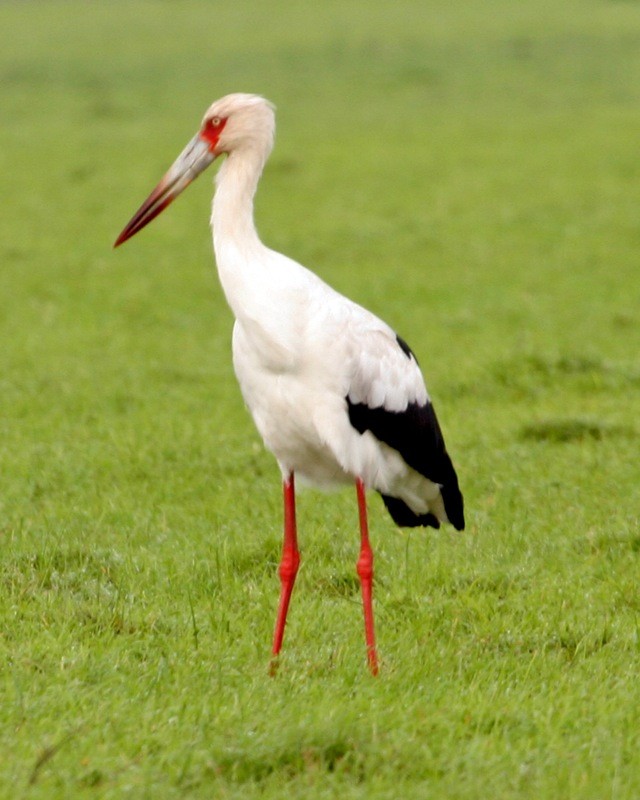Maguari Stork
A species of Typical Storks Scientific name : Ciconia maguari Genus : Typical Storks
Maguari Stork, A species of Typical Storks
Botanical name: Ciconia maguari
Genus: Typical Storks
Content
Description General Info
 Photo By Lip Kee Yap , used under CC-BY-SA-2.0 /Cropped and compressed from original
Photo By Lip Kee Yap , used under CC-BY-SA-2.0 /Cropped and compressed from original Description
The maguari stork (Ciconia maguari) is a large species of stork that inhabits seasonal wetlands over much of South America, and is very similar in appearance to the white stork; albeit slightly larger. It is the only species of its genus to occur in the New World and is one of the only three New World stork species, together with the wood stork and the jabiru. 
Size
1.02 m
Life Expectancy
30 years
Nest Placement
Ground
Feeding Habits
Maguari Stork consumes a wide range of aquatic and terrestrial prey, including frogs, fish, rodents, snakes, crabs, insects, and the young of other marshbirds. Maguari Stork's foraging behavior involves wading and probing in water for food. It possesses specific adaptations for a diverse diet, preferring to feed at times that maximize prey availability.
Habitat
The maguari Stork primarily occupies open lowland habitats, such as wet savannas, freshwater wetlands, and seasonally flooded grasslands. These areas include diverse wetland types like shallow marshes, lakes, and reedbeds, as well as agricultural landscapes like rice fields. The species is adaptable, utilizing both seasonally wet and dry pastures for foraging, and can be found from sea level up to elevations of 1,400 meters. During the non-breeding season, it extends its range to dry open savannas. Geographically, the maguari Stork's habitat spans tropical and subtropical wetland regions.
Dite type
Carnivorous
General Info
Feeding Habits
Bird food type
Distribution Area
The maguari stork has a relatively wide distribution over much of South America, and occurs primarily to the east of the Andes. It lives in the llanos of Venezuela and eastern Colombia; Guyana; eastern Bolivia; Paraguay; Brazil, but rarely in the Amazon and the north-east,); Uruguay and Argentina. The most southerly part of the range lies in the Chubut province. It more rarely occurs to the west of the Andes (e.g. in Chile) and probably does not breed there. It is a rare visitor to the Surinam coast from March until May and also been reported as a vagrant on Trinidad and Tobago. It is especially common and widespread in the Chaco of Argentina, which appears to be a popular destination for flocks of about 30-40 migrant individuals from the southern hemisphere part of the range that come from the south in winter to seek warmer temperatures. The stork is also common in Brazil, especially in the state Rio Grande do Sul, Paraguay and the Pampas of Argentina. It occurs seasonally and is common in the Pantanal of Argentina. Large numbers migrate to the Pantanal in the wet season, probably from the Parana Basin and Rio Grand do Sul. However, overall migration patterns for this species across its range have thus far not been determined exactly. Its habitat largely comprises open lowland shallow-water wetland such as tropical wet savannah grasslands, marshes, mudflats, and flooded fields. It more occasionally frequents dry fields, but invariably avoids forested regions. Numerous maguari stork assemblages have been observed in their habitat during the dry season, where they forage in low-level bodies of water where prey is concentrated. The maguari stork lives in sympatry with jabiru and wood stork where the ranges of these three species overlap, especially in the Venezuelan llanos. Of all American stork species, the maguari stork has the smallest geographical range. 
Species Status
Not globally threatened.